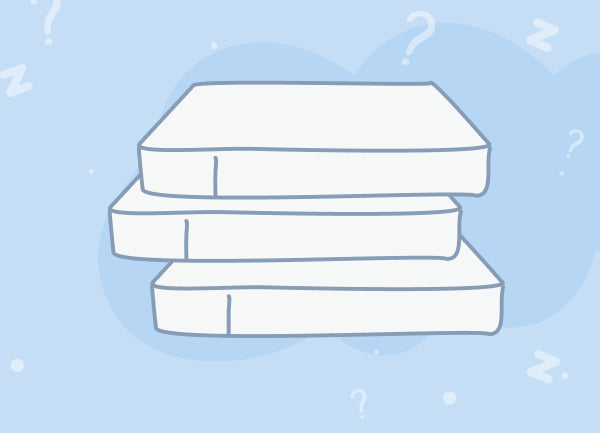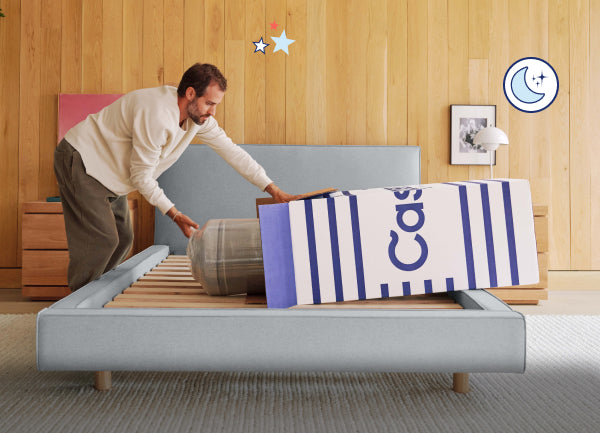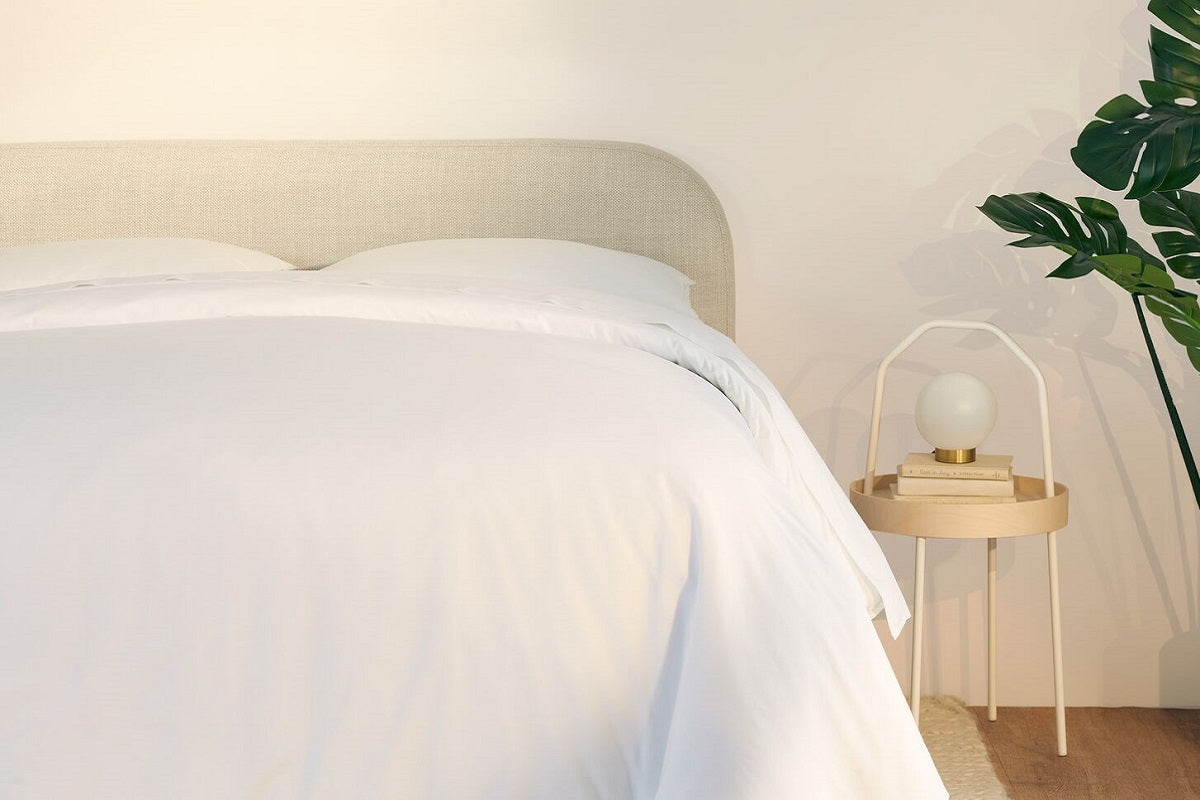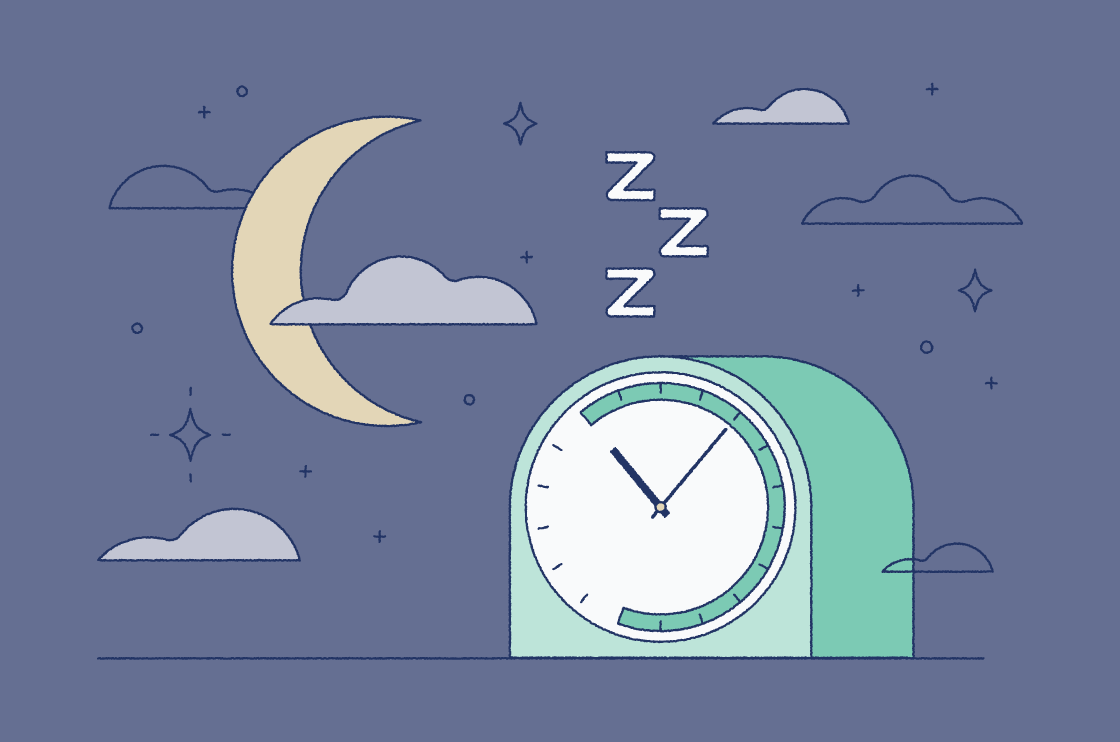Disclaimer: This article is for informational purposes only and should not be taken as medical advice. Please consult a professional when dealing with mold on your mattress.
While you probably don’t have nightmares about mold, it’s like a boogeyman for anyone who lives in a humid or warm climate. When temperatures rise and your room gets too humid, you could find mold on your mattress.
If you see suspicious black dots on your bed, don’t despair. We’re going to discuss how you can figure out whether your bedroom is actually moldy. We’ll also walk through how you can banish the moldy boogeyman from your mattress.
Our Waterproof Mattress Protector guards against dirt, spills, and normal wear and tear.
What Does Mold on a Mattress Look Like?
If you suspect your mattress is growing mold, how can you diagnose the issue? Here are some common signs you can watch out for:

- Odor — Mold has a distinctive, musty odor. If you’re not sure what mold smells like, think about the smell right before or after it rains with a little added funk.
- Discoloration — Mold on a mattress can cause the material to turn different colors. Look for dark spots or blotches, especially if they seem to pop up without a cause. They might feel distinctly fuzzy or slimy. Wash your hands well after touching a surface you suspect has mold.
- Warped surfaces — Mold can warp a solid surface, such as a wall. Common signs include bubbling or peeling paint. If you see this in your bedroom, there’s a good chance your mattress could also have mold.
- Respiratory symptoms — Mold exposure can cause health issues, especially for children, older adults, or immunocompromised people. Mold is incredibly common, so if you start experiencing these symptoms, it can indicate there’s a more serious mold problem.
Common physical symptoms of mold exposure include:
- Wheezing
- Skin rashes
- Cold or cough that won’t go away
- Itchy or watery eyes
- Congestion
- Worsened allergies
- Persistent headache
Mold vs. Mildew

Many people use the words mold and mildew interchangeably, but they’re not the same thing. Mold is a common type of fungus and mildew is a type of mold. It’s important for the sake of your health to know the difference between mildew and mold.
Both mold and mildew thrive in moist and warm environments. Mildew is more common than other types of mold. While mildew can be harmful if it grows out of control, it generally causes fewer health problems and is easier to clean than mold. This is because mildew grows on surfaces and can be wiped away.
On the other hand, toxic mold can grow into items. This is problematic because if you wipe the surface of a moldy object, it might look mold-free even though mold continues to grow under the surface.
How to spot mildew:
- Grows on the surface of an object.
- May appear white, gray, or yellow.
- Texture can be fluffy or powdery.
How to spot mold:
- Grows into an object.
- May appear green or black.
- Texture can be fuzzy or slimy.
The tricky thing about mold is it can look different depending on the type of mold and the objects that grow it. When in doubt, consult a professional to figure out the type of mold growing in your home.
What Causes Mold on a Mattress?
Many homes struggle with humidity issues, so it’s no wonder mold on a mattress is fairly common. Some common situations that lead to mold growth include:
- High humidity in a bedroom
- Poor or improper ventilation
- Very warm sleeping environments
- Keeping your mattress on the floor
- Spilling liquids on your mattress
The common thread in these situations is the damp and warm environment that’s ideal for mold growth.

How Do I Remove Mold From a Mattress?
All’s not lost if your mattress is moldy, but it can save you a lot of stress if you can prevent mold in the first place. So, let’s talk through how you can protect your mattress from mold.
The key is keeping your mattress dry and in a ventilated area. You can prevent a moldy mattress by:
- Using a dehumidifier or air purifier to regulate the sleep environment.
- Using a slatted bed foundation to improve ventilation around the mattress.
- Using a waterproof mattress protector to keep a new mattress dry.
- Leaving fans on to help circulate air.
If you’ve missed the window for prevention and noticed your mattress looks a little funky, the next step is figuring out whether you can remove the mold yourself.
Ideally, a moldy mattress should be professionally treated or replaced. Long-term mold exposure can cause serious health issues, so professional solutions are your best bet if you’re concerned your mattress is mold-infested.
If there is very little mold on your mattress, you can try a couple of methods to remove it. The most common strategies are to use alcohol or hydrogen peroxide to clean your mattress. If your symptoms or other signs of mold persist after you’ve tried to get rid of the mold yourself, you might want to consider replacing your mattress.
Disclaimer: This article is for informational purposes only and should not be taken as medical advice. Please consult a professional when dealing with mold on your mattress.
H3: Remove Mold with Rubbing Alcohol
Even though mold can be tricky to kill, rubbing alcohol does a good job and is easy to find around the house. Also called isopropyl alcohol, rubbing alcohol is able to destroy fungus cells because it can cross the cell membrane.
Here are the steps to get rid of mold using rubbing alcohol:
- Vacuum all sides of your mattress.
- Mix equal parts rubbing alcohol and warm water.
- Saturate a rag in the rubbing alcohol solution and wring it out.
- Use the rag to scrub away all visible mold.
- Continue to scrub beyond the edges of the visible mold to kill any invisible spores.
- Allow your mattress to dry completely in direct sunlight.
- Spray upholstery-safe disinfectant on the mattress.
- Allow to dry again.
It’s important to use the right strength of rubbing alcohol to kill the mold. If the concentration is too high, it can evaporate too quickly without killing the mold. If the concentration is too low, the solution may take too long to evaporate and can make the problem worse.
This method recommends a 50% concentration, so your solution will be half water and half rubbing alcohol. Check the bottle — your rubbing alcohol is probably already diluted. If the concentration is less than 100%, you might need a little less water to get the job done.

Remove Mold with Hydrogen Peroxide
You probably have hydrogen peroxide in your first aid kit, but did you know that you can use it to get rid of mold in your mattress?
We know peroxide as the stuff that fizzes when you’re cleaning a paper cut. This fizziness is because of a chemical reaction that releases a lot of oxygen very quickly. When this reaction happens on a moldy surface, it degrades mold cells and kills them.
Here’s how you can use hydrogen peroxide to kill mold:
- Vacuum all sides of your mattress.
- Mix one part hydrogen peroxide to three parts water.
- Dip a cleaning brush into the solution and use it to scrub the mattress.
- Continue to scrub beyond the edges of the visible mold to kill any invisible spores.
- Put the remaining solution in a spray bottle and lightly spritz the mattress surface.
- Allow to dry in direct sunlight.
- Repeat steps 1–6 one more time.
Peroxide is the active ingredient in products like hair bleach, so it can cause discoloration on your mattress, especially if it’s a darker color.

FAQs
You shouldn’t sleep on a mattress if it’s infected with mold. This can cause both short- and long-term health issues, so it’s important to remove the mold or replace your mattress as soon as you notice an issue.
Warm sleeping environments, high humidity, poor room ventilation, liquid spills, and keeping your mattress on the floor are all common causes of a moldy mattress.
If your mattress smells musty, is discolored with dark spots, you experience respiratory symptoms, or the materials around your bed are warping, these are all signs your mattress might be moldy.
A moldy mattress can cause physical symptoms like wheezing, skin rashes, congestion, itchy or watery eyes, a cold or cough that doesn’t go away, worsened allergies, or a persistent headache.
Protect Your Mattress with Casper
Your first line of defense against mold should always be protecting your new mattress from moisture with accessories like a slatted bed foundation or a waterproof mattress protector. But we don’t always have the foresight to keep mold out.
We want you to have better sleep, and that means maintaining a healthy, mold-free sleep environment. If you’ve spotted mold on your mattress and decided it’s time for a replacement, Casper has everything you need for a safe place to rest your head.














